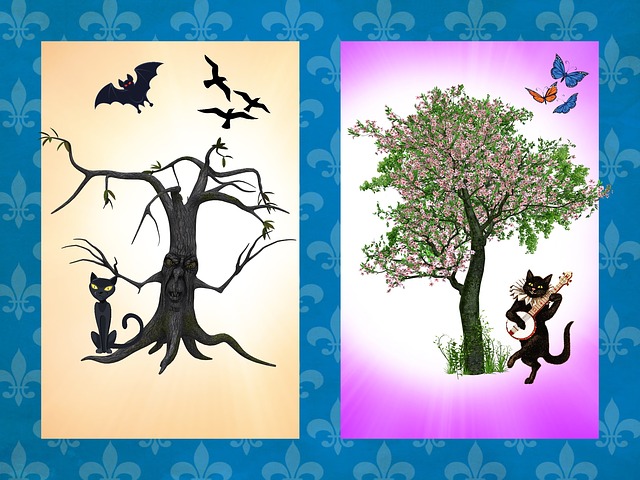When most people think of metaphors, they think of a comparison between two things used to explain an idea or concept. So, for example, you might say, “life is a journey,” or “love is a flame.” However, extended metaphors are a bit different. An extended metaphor is a comparison that is extended over several sentences or even paragraphs. Rather than being used to explain an idea or concept, it becomes the text’s primary focus.
Extended metaphors can be powerful tools for writers, as they can help create images in the reader’s mind and make their writing more memorable.
This blog post will discuss the purpose and steps to take when writing extended metaphors and provide some examples.
What is an extended metaphor, and how can it be used in writing?
An extended metaphor, also known as a sustained metaphor, is a literary device that extends over multiple lines, paragraphs, or pages. It compares two unlike things that repeat throughout the writing. It can be used to add depth and texture to the content, as well as create vivid images in the reader’s mind.
Additionally, extended metaphors can help bring out themes or ideas more clearly than literal language alone.
Extended metaphor examples from literature
Some famous examples include:
– Robert Frost’s The Road Not Taken – Frost compares life to a journey down two roads in this poem. The metaphor is extended throughout the poem as he reflects on his choice and how it might have changed his life.
– Shakespeare’s Sonnet 18 – The extended metaphor in this poem is a comparison between a summer day and love. William Shakespeare compares fading beauty to the passing of time and likens eternal love to the everlasting summer sun.
– Another great example can be found in Mark Twain’s beloved classic, The Adventures of Huckleberry Finn when Huck observes, “It was enough to make a body ashamed of the human race.” This metaphor underscores Huck’s disillusionment with society and his growing awareness of the hypocrisy and cruelty that exists in the world.
Extended metaphors in thrillers are often different than those used in other genres

They may be darker, more sinister, or more complex
In thrillers, the metaphor may hint at the perpetrator’s motive or suggest the complicated web of relationships among the characters. Extended metaphors in thrillers are often used to create suspense, tension, and a sense of unease in the reader.
For example, a thriller might use a metaphor to suggest that a predator is stalking someone. The prey might be described as “like a lamb led to the slaughter” or “a deer in headlights.” These images create fear and a feeling of vulnerability in the reader, heightening the suspense and tension of the story.
Here are a few examples:
“Rick, in his cabin, was like a caged lion. He had the power to break free, to roar and shake the bars that held him back. But he didn’t. He stayed in that cramped space, pacing back and forth and always looking towards the door, waiting for someone to come and let him out.”
Another example could be when the protagonist tries to escape from the villain and feels like they’re running through molasses. Every step seems to take an eternity, and when they think they’re getting close to freedom, the villain grabs them from behind.
Or a detective describing the killer’s mind as a “dark web.” He says: “The killer’s mind is like a dark web. A labyrinth of tunnels that twist and turn in every direction, with no way out. He can disappear into the shadows, and no one will ever find him.”
This metaphor is clever because it helps the reader visualize the killer’s twisted, unstable mind. It also creates a sense of fear and suspense since the reader knows that the detective is chasing after a murderer who seems to be hiding in plain sight.
Steps for writing extended metaphors
– First, decide the main comparison you want to make and select two things that are comparable in a way that will be meaningful for your readers. It can help to think of something abstract, like a feeling or emotion, and link it to something concrete, like an object or situation. For example, if you want to talk about courage or strength, try using an animal like a lion or eagle.
– Second, develop a few concrete details to help your extended metaphor make more sense to readers. These details should be related to the comparison you’ve made by connecting them symbolically or illustrating their similarities in how they appear or operate.
– Finally, use figurative language and vivid imagery throughout your extended metaphor to bring it to life fully. This means employing figurative language like similes and metaphors, as well as extended diction, to describe the elements of your extended metaphor in further detail.
To better illustrate this process, here is an extended metaphor example
“Her heart was a lonely castle in the countryside, standing courageously against the wind and rain. The stone walls were her protection, shielding her from hurt and pain. But inside the castle was a void, empty of anyone to share in its glory or feel the warmth held within.”
In this extended metaphor, we can see that the heart is being compared to a castle. The figurative language used to convey the imagery of the castle, such as “standing courageously against the wind and rain” and “shielding her from hurt and pain,” helps to develop the extended metaphor.
Tips for using extended metaphors effectively in your writing
1. Start by finding a metaphor that resonates with you and captures the essence of what you want to say.
2. Once you’ve found your metaphor, brainstorm as many different ways as possible to express the same idea using the metaphor. When brainstorming extended metaphors, the best place to start is by looking at examples.
3. Experiment with word order and sentence structure until you find a way of expressing the idea that sounds natural and flows smoothly.
4. Make sure to use strong verbs and adjectives to bring the metaphor to life and create a vivid picture in the reader’s mind.
The importance of figurative language in writing

Figurative language is essential when writing extended metaphors, as it brings color, emotion, and life to your writing. It can also be used to make your writing more interesting and engaging for readers.
For example, similes and metaphors can be used to compare two things in order to create a vivid picture for the reader. By using figurative language, you can help your readers see, feel and understand what you are trying to say better than if you were to use plain, everyday language.
Utilize extended metaphors throughout your writing: Using them doesn’t mean simply dropping them into your work once or twice and forgetting about it; extended metaphors can be used multiple times throughout your writing. This will create a sense of cohesion and consistency that will draw readers in.
Use extended metaphors to provide examples or explain a complex idea: One of the great benefits of extended metaphors is their ability to make abstract concepts easier to understand. For example, if you are trying to explain something like a concept for a new product, you can use extended metaphors to give your readers an image they can relate to.
Show, don’t tell: Extended metaphors allow writers to show the reader what they mean instead of just telling them. This helps make extended metaphors more vivid and engaging while providing compelling images or stories that draw in the reader.
Focus on the details: The success of extended metaphors relies heavily on providing enough detail and context for the reader to understand what you’re trying to say. Try to pay attention to every little detail in your extended metaphor so that readers won’t get lost or confused.
Use extended metaphors sparingly: While extended metaphors can be powerful tools, they should be used sparingly. Overusing extended metaphors can lead to repetition and make your writing dull or uninteresting.
Remember the purpose: Before writing extended metaphors, it’s essential to remember their purpose. Are you trying to communicate an idea or concept? Are you trying to illustrate a point or explain a situation? This will help ensure that your extended metaphor is meaningful and effective.
Be creative: It can be easy to fall into the trap of using extended metaphors that are overused or cliche. To prevent this, it’s essential to get creative and think of unique extended metaphors to help readers understand your point freshly and excitingly.
Use vivid imagery: Extended metaphors are an excellent opportunity to use strong imagery and description to bring your extended metaphor to life.
Make sure it’s relevant: Make sure your extended metaphor is appropriate to your writing. If your extended metaphor isn’t in line with the topics discussed, it will not be effective and could even distract readers from the real point of your writing.
Please keep it simple: Though extended metaphors can help create complex ideas and feelings, it’s essential to keep your extended metaphor as simple as possible. Try not to use too many different elements in the extended metaphor, and avoid flowery language that could confuse readers.
The pitfalls to avoid when using extended metaphors

Again, when using extended metaphors in your writing, avoid cliches and overused words. Also, make sure to keep the extended metaphor consistent throughout the piece of writing. It’s important that readers can follow along easily and not get confused.
Additionally, extended metaphors should always relate to your main point or idea. If extended metaphors start feeling forced or out of place, revising the writing to ensure they are used appropriately and effectively is best.
Here are a few examples of extended metaphors in action:
– “Life is like a roller coaster – filled with highs and lows, but always an exciting ride.”
– “My career is like a sailboat – I’m navigating the waters of success with determination and perseverance.”
– “Love is like a fast train – it’s unpredictable and powerful, but you never know when it will reach its final destination.”
One example of an extended metaphor in action is when a writer compares two things using a series of related comparisons. For instance, in The Waste Land by T.S. Eliot, he writes about how humanity has become like a cracked urn that can no longer hold water. The image of the cracked urn is used to describe how humanity is broken and no longer functioning as it should.
Another example can be found in the song “Picture to Burn” by Taylor Swift. In the song, she compares her relationship with her ex-boyfriend to a wildfire that burned out of control. She talks about how the relationship was passionate and destructive, ultimately hurting both.
Conclusion
An extended metaphor is a powerful tool that can add depth and meaning to your writing. An extended metaphor can help you connect with your readers and communicate your message in a new and interesting way. When used poorly, however, an extended metaphor can be confusing and off-putting for your reader. Follow the tips in this article to ensure that you use extended metaphors effectively in your writing. And remember, if you ever get stuck, plenty of resources are available to help you brainstorm the perfect extended metaphor for your next piece of writing.
If you’re working on your first novel and are looking for more help with your writing, please check out my other writing articles at https://ullahakanson.com/blog/
Good luck!
All the best,
Ulla


Halle B
Hi, I was reading through this and I saw your example with a Taylor Swift song called “dearest”. Last time I checked she didn’t have a song called dearest… or any song about wildfires, where did you get this from because I think it’s a cool idea! Love your website! Halle
Ulla Hakanson
Hi Halle,
You are right! The name of Taylor Swift’s song in the extended metaphors blog is not “Dearest,” it’s “Picture to Burn.” Swift’s first taste of expressing bitter heartbreak on a song came on her first album. She was only 16 at the time. Swift’s high school beau Jordan Alford hurt the young songwriter so deeply that she penned this searing, painful country track about him. Thank you so much for telling me about my mistake:)
zofia
I absolutely loved this page. I’m preparing for my creative writing for my GCSE and this gave me great ideas and really helped me think of some extended metaphors. The website if well set out, explained well but still kept concise and clear. thankyou!
Ulla Hakanson
Thank you, Sofia. I’m thrilled to hear that it helped you!
Good luck with your GCSE test!
🙂 Ulla